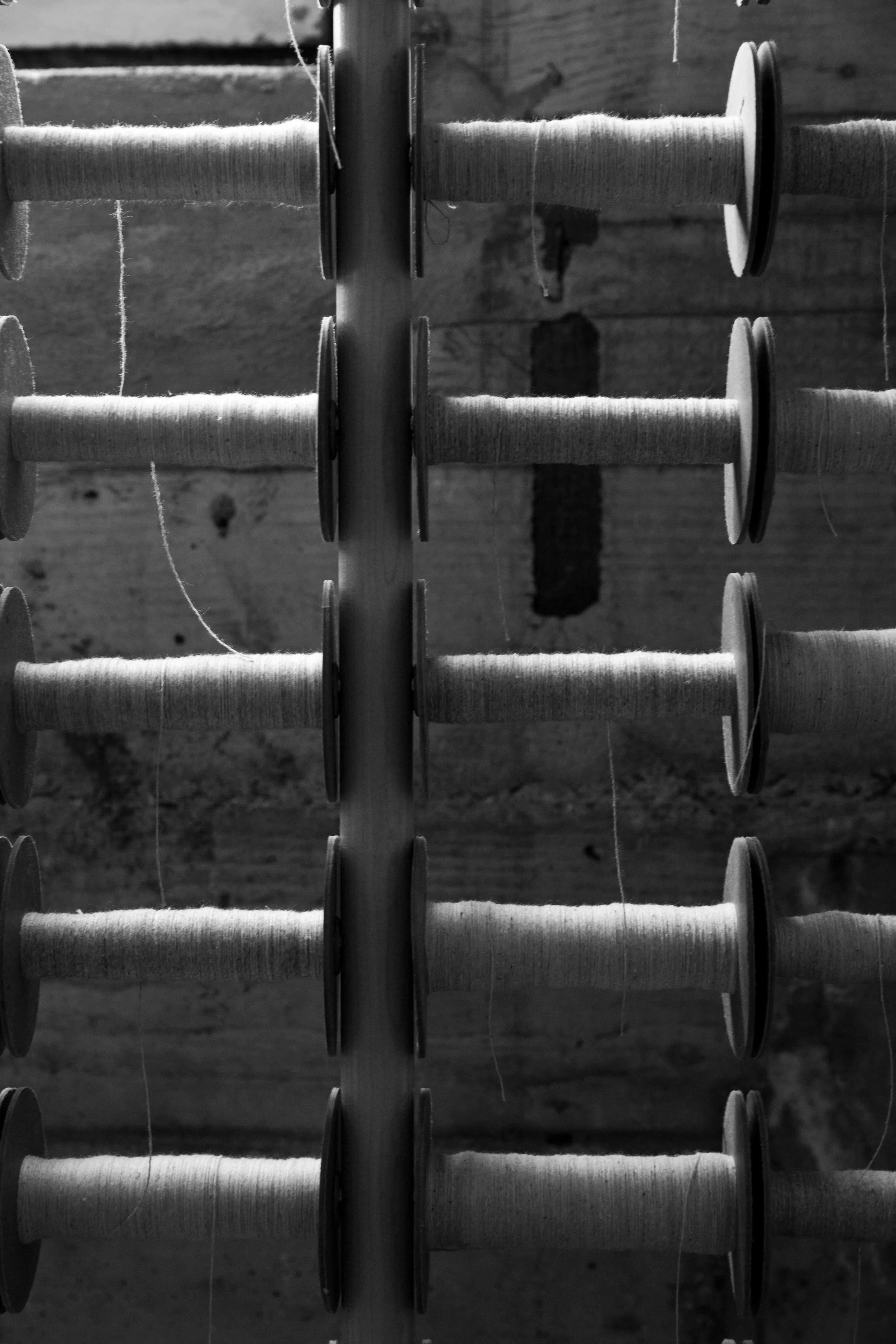on process
I produce work in batches dictated by the warp, the threads that run lengthwise along the cloth and are fixed, in tension, to the body of the loom. Every warp takes several days to move from cones of yarn to a well-dressed loom and each has its own inherent design plan and a bit of hand-driven personality imbued by the weaver's technique, mood and habits. Pattern making guides the design plan and helps to maximize use of cloth and designate design details like selvedge as hem or collar.
Each month, I am able to make about 15-20+/- pieces of work and number these according to the warp order in which they were woven. Shirts might share a warp with handkerchiefs; cloth might share a warp with a dress. In this shared company, each piece is part of a family that holds stories about a particular moment in time when the weaver's hand was perhaps overly warm from the demands of deep summer or bundled, to the wrist, in late winter; when the weaver's mind was either intensely focused on drawing a tighter selvedge or drifting, aimlessly, over the rise and fall of her sourdough starter.
photography: Nicole Franzen
part I
One spool is wound for every 'end per inch' in preparation for dressing the warp beam. I typically use setts that include up to 30 ends per inch and 1100 ends across the width of the loom. This part of the process uses the only electrical tool in our studio, the bobbin winder, and covers us in lint from head to toe. I wear thick leather gloves to keep the yarn from cutting my skin and a bandana to cover my nose and mouth.
part II
The fully dressed warp beam leads to the tedious task of threading, often requiring 8-10 hours for completion. Each thread passes through a single heddle and maintains a strict order in keeping with the weaving draft. I often pull the cloth beam and beater off of the loom and sit just inside the bench on a small stool where heddles are at eye level.
part III
After the heddles, each yarn is then 'sleyed' through the reed of the beater at intervals based on the sett of the cloth. I treat myself to a bit of whiskey when the last thread has been pulled through and tied to the cloth beam. Once the dobby mechanism has been set, weaving, at long last, may begin.
part IV
Weaving with the flying shuttle helps to relieve tension on the wrists during long stretches of production, though I far prefer hand throwing the shuttle and do so as often as possible. Flying shuttles are weighted on either end and make a bit of clatter and clang as they move from side to side. Both of my production looms are entirely powered by the body, relying on my legs to raise and lower the harnesses and my shoulders and arms to move the weft across the loom. I relish the physicality of this process and the connection to my running practice in keeping me strong and agile to meet the demands of the loom.
finishing
Garments are finished by my meticulous pattern maker and tailor, Jisun Lee. At the end of each week, Jisun picks up a length of yardage with each garment marked along the cloth and drops off the prior week's finished work. This partnership is one of great trust and reward, graced with mutual admiration and respect for the other's expertise.
I am fortunate to work with a few select stockists who share the same values and uphold the same level of integrity in the work that they do. This is slow work, difficult to pursue in an industry fraught with trend and endless pace. This is the work of artists, thinkers, craftsmen and activists and exactly the kind of work I want filling my days.







